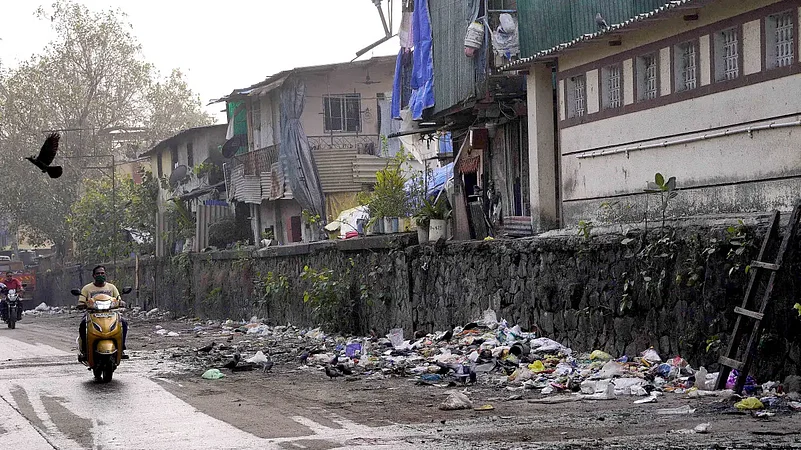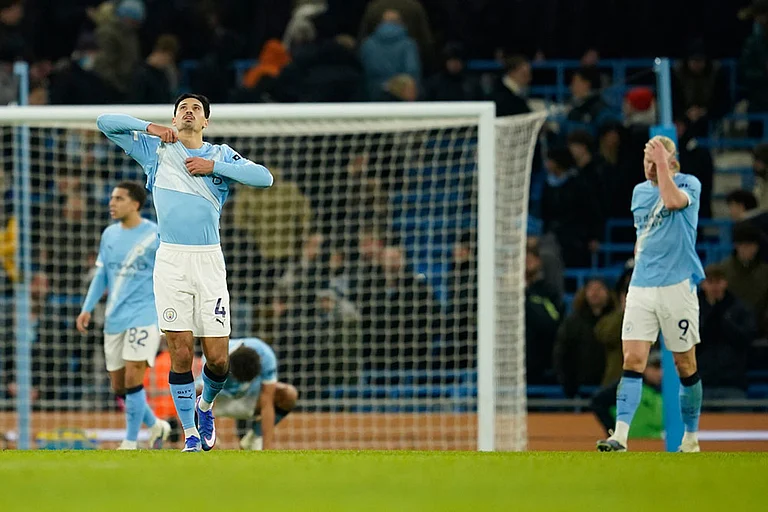Sakina Bi sits outside her house in one of the narrow lanes in Cheetah Camp, a transit facility in Trombay for those displaced from their houses in Janata Colony. The lane where Sakina Bi’s house is located opens out to dingy shanties that speak of poverty. The woman seems busy – she’s running her fingers through the shoulder-length hair of a child seated in front of her. Sakina Bi pulls out head lice and squashes them between her nails. As she sees more lice, Sakina Bi pulls the child closer. The child squirms and yelps as her hair is yanked.
“Idhar ka paani theek nahi hai. Baal chikat hota hai aur joo hota hai,(the water here is not good. The hair gets sticky and then the head lice come in)” said Sakina Bi looking up. Of indeterminate age, she continues to pull lice out of her daughter’s hair. “When we came to live in Cheetah Camp, I was a baby. I grew up here. There has been a lot of change in this place. The only thing that has remained unchanged all these years is our poverty. Gareeb hona gunaah hai (It is a crime to be poor),” she states in a matter-of-fact manner. The years of living in horrific conditions in the marshy, mosquito-infested Cheetah Camp have taken a toll on Sakina Bi’s health and temperament. A tuberculosis survivor, who was once hopeful of getting a house out of Cheetah Camp, is now resigned to the fact that the wait may be much longer.
For the over 12,000 households living in Cheetah Camp, the threat of demolitions and evictions hangs like a Damocles sword over their heads. This Camp is a story of displacement, resettlement and displacement again. The hutments are located cheek by jowl with an expanding population reducing the habitable area within. A hotbed for poverty and crime, the residents here live in the fear of another displacement

The Camp is a low-lying area near Trombay - about nine kilometres from Mumbai - and is located along the Arabian Sea. The area is covered with slums and chawls. The area within the camp is divided into numerous sectors and is home to Hindus, Muslims, Dalits and Christians from different parts of the country. This settlement was born from the displacement of people from the Janata Colony, home to the poor. The residents were evicted to facilitate the construction of houses for the personnel of the Bhabha Atomic Research Centre (BARC) located close to the Janata Colony.
On May 17, 1976, the Brihanmumbai Municipal Corporation (BMC) armed with a huge posse of policemen started demolitions in the Colony. The poor lost their self-built houses, belongings, and livelihoods and were forcibly evicted to the Cheetah Camp – land which was bought by the BARC from the BMC to resettle the displaced from the Janata Colony. It is important to understand the history of the Janata Colony to get an insight into the origins of Cheetah Camp. The Colony came into existence in the 1950s following the orders of Morarji Desai, the first chief minister of the erstwhile Bombay State. During the 1950s, pavement dwellers and those from the slums living in different parts of the then Bombay, came to live in the Janata Colony which was kind of a “permanent squatters” colony.
According to information from sources, Desai had ordered a clean-up drive of the homeless living on the pavements of South Bombay, particularly those from the streets of Carnac Bunder, Marine Drive, Worli and Tulsi Wadi. All these pavement dwellers were evicted and resettled in an area located at the northward tip of Bombay which was surrounded by mountains and trees on all sides, later christened “Janata Colony”.
While the residents familiarised themselves with the Colony, far away in Delhi the then Central Government was firming a plan to set up BARC close the where the Janata Colony was located. The construction of the BARC started in 1965. A wall was built around the Janata Colony which stopped access of the residents from in and out of the area. Sources said that this wall ran the entire length and breadth of the Colony and isolated the settlement. Then in 1970, the BARC purchased the land where the current Cheetah Camp is located. In the same year, the BMC issued eviction notices to the residents of the Colony, who in turn petitioned the Bombay High Court and the Supreme Court for relief. They lost their case in both the courts. “Once the case was lost, it was an overnight eviction. We were poor, so we got kicked out of one place and sent to another, which was a nightmare,” said Sadiq Khan, who moved to Cheetah Camp with his parents, and siblings at the time. “My mother was crying because we had lost our belongings. She was inconsolable,” he told Outlook. “My mother’s dream was to live in a house with pucca walls,” said Khan.
Due to the location of the Navy’s arms depot, development has been restricted in this area. There can only be ground plus one structure tenements. The ownership of the shacks is limited to the owner with the rider that the government can shift them at any time like in 1976.
In 2001, the Navy raised concerns that Cheetah Camp was too close to the naval arms depot. The slums are located within 500 metres of the sensitive naval armament depot of the Western Naval Command. A compound wall of the depot is located close to the “A” and “I” sectors of the Camp, while the rest of the sectors are near the creek. The first floors of the slums located in the “A” and “I” sectors have a clear view of the depot and the activities that are on inside.
Mangal Shinde is proud of the crochet decorations in her one storey tenement. They are all made by her, she says. Though Shinde wants to get new furniture for her house, she and her husband, who works as a welder, have been postponing it. “Amala bheeti wattey. Bharosa nahi. Ghar paadla tar watola honar. Aaj ghar aahe, udaya nahi,” said Shinde to Outlook. (We are scared. We do not have trust. If they pull down our house all will be lost. Today there is the house, tomorrow it may not be there.)
In 2001, some miscreants from the Camp caused a security breach by clambering up the compound wall and jumping into the depot complex. They were arrested but it heightened the discomfort between the Navy and the residents of Cheetah Camp. The Western Command has on numerous occasions in the past asked the state government to relocate Cheetah Camp.

The houses here are small, dingy and in congested lanes. An adult would find it difficult trying to stretch the hand between two houses. Though the civic amenities include toilet blocks within Cheetah Camp, some of the residents told Outlook that they were inadequate for the population within the Camp. Homemaker Amruta Kale uses the public toilet at 4.30 a.m. to beat the long queue afterwards. “We have to wait for a long time to use the toilets. It is scary to use them at night. They should build more toilets,” said Kale. The area of most of the houses is 150 sq ft, forcing residents to build a first floor.
Cheetah Camp is far away from the suburban train stations, the nearest being Mankhurd which is nearly five km away. The residents have to use the BMC bus service to reach the railway station. Over-crowded buses at irregular timings have impacted the lives of the residents, including students, the working population and those with small businesses. Businesses such as zari work and bag making are carried out in various households here.
The area is prone to flooding as a large part has not been levelled. Large tracts are marshy due to the proximity to the creek. The monsoon months are the worst as there is water everywhere, said Sakina Bi. “Itna bada Bambai mey gareeb keliye ghar nahi hai. Idhar se mauka nahi milta nikalneka,” she said wistfully. (In such a big place like Mumbai, there is no place for the poor. We are not getting a chance to move from this place.)


























